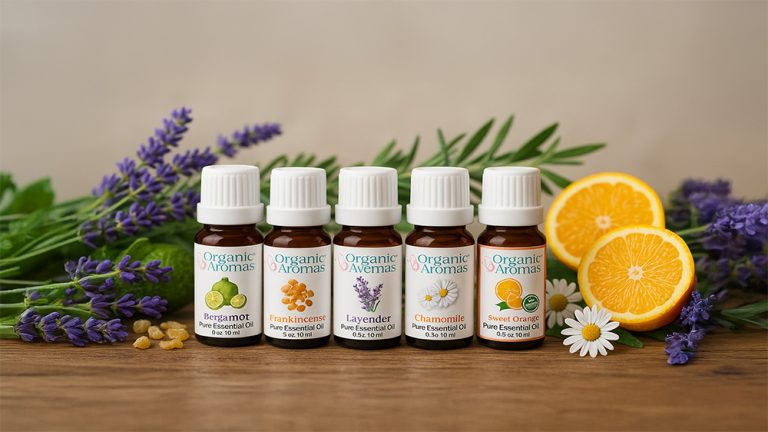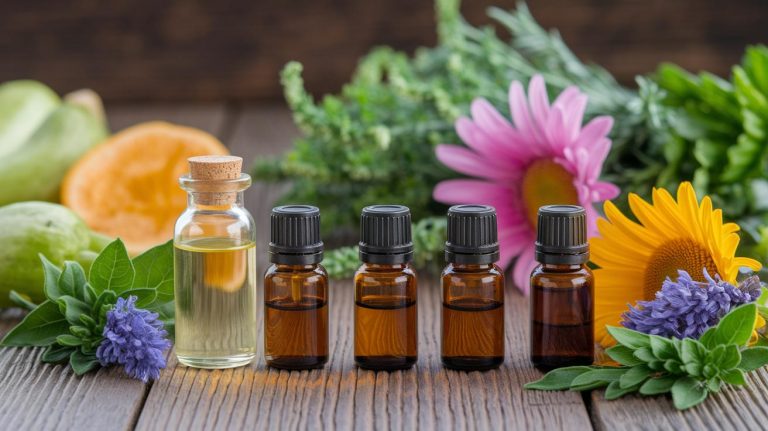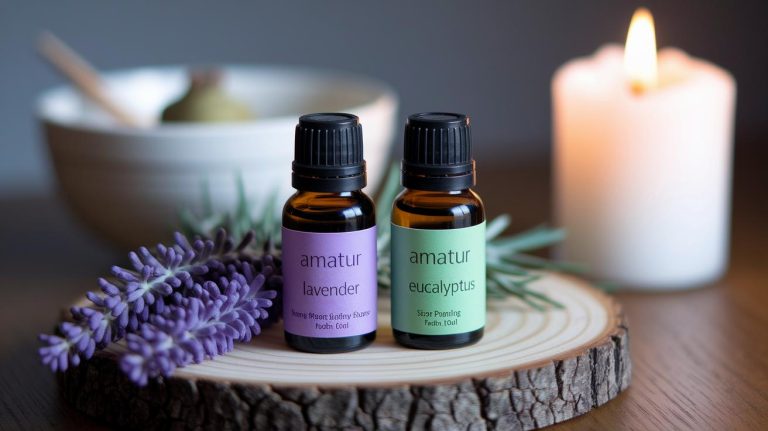7 how to start aromatherapy at home Blissful
Have you ever wished your home could feel like a mini spa? With Organic Aromas’ pure essential oils, a few drops can breathe calm into every room. All our oils are ethically sourced and 100% organic for your peace of mind.
Inhaling lavender mist (tiny droplets that deliver pure lavender oil) gently slows a racing heart. Warm peppermint steam (a cozy cloud of peppermint aroma) lifts afternoon fog. It’s like gifting yourself a moment of calm. Breathe. Relax.
The best part? Setting up aromatherapy at home is simpler than you think. Next, you’ll discover seven easy ways, from our Raindrop® diffuser to a pocket-sized personal inhaler, to weave joyous scents into your daily life. Then pick your favorite and notice subtle shifts in your mood, sleep, and focus.
Getting Started With Home Aromatherapy
Aromatherapy uses pure essential oils extracted from plants to support your mind and body. These oils come from steam distillation (how steam pulls out fragrant, therapeutic molecules) or cold pressing (squeezing oils out of peels or petals). A tiny 5 ml bottle holds about 100 drops, while a 15 ml bottle delivers roughly 300 drops. If you’re wondering how to start aromatherapy at home, begin by choosing a trusted organic oil and a delivery method that feels right for you.
There are three simple ways to enjoy these aromatic treasures. Inhalation brings mist into your space through diffusers, personal inhalers, or gentle steam, inhaling lavender mist can calm a racing mind. Topical use mixes a few drops into carrier oils, like jojoba or coconut, before applying for skin support. Internal use, often guided by a certified pro, can add tiny amounts of oil into capsules or recipes. These approaches offer relaxation, improved sleep, enhanced concentration, and respiratory support. Thinking about how to start aromatherapy at home? Pick one method to try this week and notice the subtle shift.
Bringing essential oils into your home wellness routine is easier than you might think. Place a Raindrop® or Mobile-Mini 2.0 diffuser on a nightstand to drift into sleep. Keep a personal inhaler tucked in your purse for quick focus boosts. For topical moments, mix one drop of peppermint with olive oil and roll it onto wrists before a long drive. Of course, internal use deserves extra care, check in with a healthcare expert first. Breathe. Relax. Your path to calm is just a drop away.
Selecting Beginner-Friendly Essential Oils
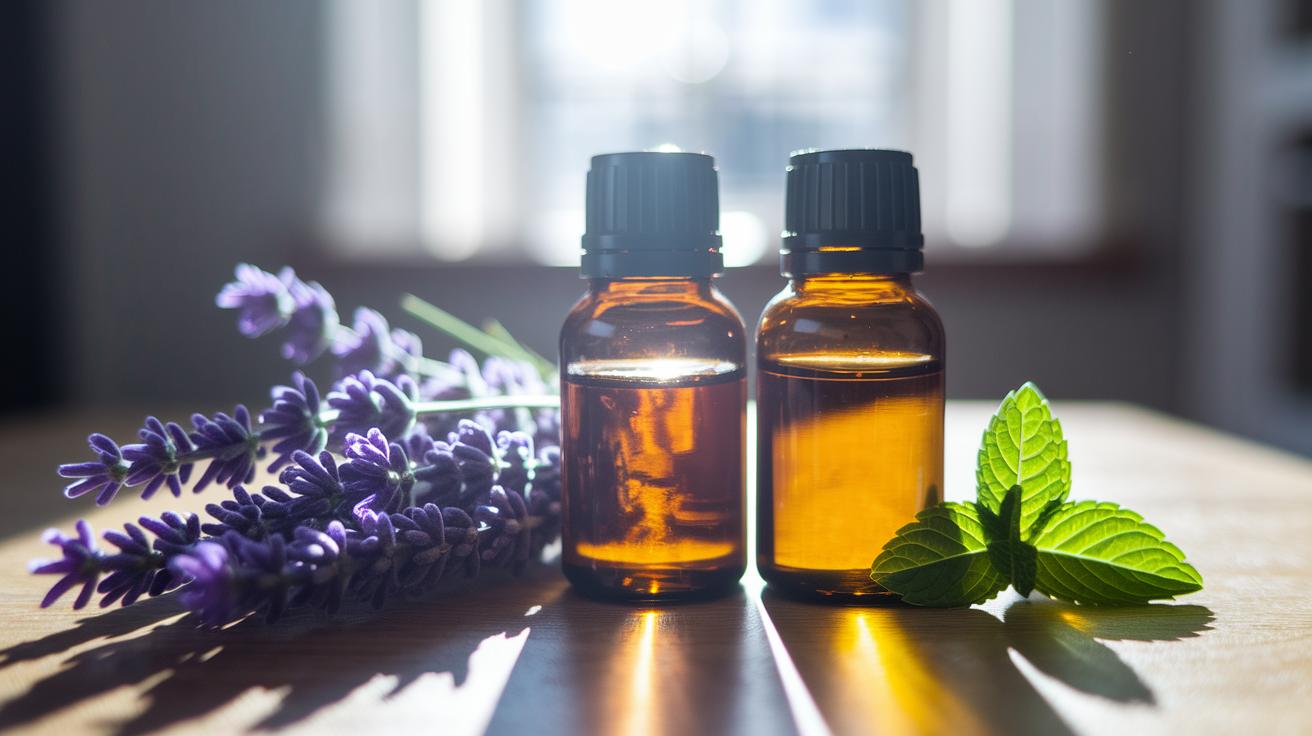
Welcome to Organic Aromas’ beginner-friendly guide to essential oils. Have you ever felt curious but unsure where to start? These gentle scents can bring calm or clarity with just a few drops. Let’s explore four oils that feel warm, inviting, and perfect for new oil lovers.
Think about what you want, peace during bedtime, a focus boost at your desk, or a fresh, clean space. I suggest starting with two or three favorites, so you can notice each aroma’s unique ripple through your day. You’ll find small bottles fit easily into any routine, from morning mist to evening ritual.
Top 4 Beginner Essential Oils
- Lavender: soft floral mist for stress relief and relaxation. Add 3 to 4 drops to your diffuser.
- Peppermint: crisp, cool scent for mental clarity and focus. Put 2 to 3 drops in a cotton inhaler.
- Lemon: bright, sunshine-like freshness to lift your mood. Use 3 drops in a steam inhalation (gently breathe warm, scented vapor).
- Tea Tree: clean, herbal boost for skin care and natural cleaning. Mix 2 drops with a carrier oil (gentle oil that dilutes essential oils) before applying.
Before you stock up, let’s talk about quality. Look for 100% pure, plant-derived oils with GC-MS reports (gas chromatography–mass spectrometry lab tests that reveal an oil’s full chemical profile). This helps you avoid fillers or additives and keeps your blends honest.
Always follow dilution guidelines for safe, gentle use. And our commitment to organic purity and ethical sourcing means you can trust every bottle.
Comparing Diffuser Options for Home Aromatherapy
Choosing the right diffuser shapes how essential oils fill your room and lift your mood. Have you noticed how some scents seem to vanish quickly while others linger? Let’s explore four popular choices, ultrasonic, nebulizing, reed and evaporative, and heat diffusers, and see which fits your space. For a deeper dive on pros and cons, check nebulizing vs ultrasonic diffuser.
Ultrasonic Diffusers
Ultrasonic (high-frequency vibrations that create a fine mist) models mix water and essential oils. You’ll watch a soft cloud drift from your Organic Aromas Radiance or Mobile-Mini 2.0. That gentle mist also adds a touch of humidity, perfect for dry bedrooms or a desk corner. Try short bursts of 10 to 15 minutes to keep the air fresh without feeling soggy.
Nebulizing Diffusers
Nebulizing (how a fine mist delivers undiluted essential oils) units send pure oil molecules into the air, no water needed. Every small droplet holds full strength, so they fill larger rooms fast and leave an intense scent trail. Ideal for bold seasonal blends or when you need a quick mood lift.
Reed & Evaporative Diffusers
Reed and evaporative diffusers rely on natural airflow to pull oils up a reed or wick. No power needed, just place a few sticks in a pretty jar. They offer a gentle, steady scent that fits entryways or cozy nooks. Swap reeds every two weeks or so to keep fragrances lively.
Heat Diffusers
Heat diffusers use gentle warmth to coax aroma from oils. A low heat setting keeps citrus and floral notes bright. But watch the temperature, too much heat can alter an oil’s chemistry and soften its benefits. Best for quiet corners where you want a subtle, steady fragrance.
| Diffuser Type | How It Works | Best For | Good Points | Watch Outs |
|---|---|---|---|---|
| Ultrasonic | High-frequency mist | Dry rooms, bedrooms | Humidifies, whisper quiet | Needs water |
| Nebulizing | Oil atomization | Large spaces | Full strength, no water | Uses more oil |
| Reed & Evaporative | Passive airflow | Small areas | No power needed, low upkeep | Light scent |
| Heat | Gentle warming | Quiet spots | Simple, subtle | Can alter oils |
Choosing Carrier Oils and Dilution Techniques

At Organic Aromas, we know that picking a carrier oil (a mild oil that carries essential oils on your skin) helps blends spread smoothly and feel gentle. We want your skin to feel calm and cared for.
Common picks include fractionated coconut oil, sweet almond oil, jojoba oil, olive oil, avocado oil, apricot seed oil and sunflower oil. Each one has its own texture. Jojoba oil hugs skin like a light balm while fractionated coconut oil soaks in fast.
Have you noticed how some oils feel silkier than others? For a deeper look at how oils absorb and feel, check best carrier oil for essential oils.
A single drop of essential oil can ripple through your senses in seconds. But um, straight oils may sting or overwhelm. That’s why dilution (mixing essential oils with carrier oils) is key to keep every blend safe and soothing.
Next, let’s talk percentages for dilution (mixing essential oils with carrier oils). Use 0.5% for kids or sensitive skin and 1% for facial blends. Try 2–3% for a full-body massage and reserve 5% or more for small, targeted areas.
Here’s how to mix each ratio:
- For a 1% mix, add 6 drops of essential oil per ounce (30 ml) of carrier oil (about 3 drops per tablespoon).
- For a 2% mix, add 12 drops per ounce (around 6 drops per tablespoon).
- For a 3% mix, add 18 drops per ounce (about 9 drops per tablespoon).
You can tweak these ratios to match your needs. Always patch-test new blends and follow our safety guide for pure, organic essential oil use.
Blending Basics and Aroma Synergy

Have you noticed how a single oil in your diffuser can fill a room with its pure personality? Start simple. Add one oil and breathe in its unique aroma. Once you’re comfortable, gently mix two oils to feel how their scents dance together.
Here are some easy blends and ratios to try.
- Use a 30/50/20 ratio for top note (the bright scent you smell first), middle note (the heart aroma), and base note (the lingering depth).
- Combine citrus + floral for an uplifting, sunlit energy that picks you up mid-afternoon.
- Pair Lavender with Chamomile for a soft, lulling mist that eases you into deep relaxation.
- Mix Rosemary and Peppermint for a crisp, clear-headed blend to sharpen your focus at work.
- Aim for 20–30 drops in a 10 ml (about 200-drop) bottle to keep your aroma balanced and never overpowering.
Next, keep a small notebook nearby to jot down each ratio and how you feel. Um, those mood notes really help you spot your favorite combos over time. Breathe. Tweak. Savor the art of aroma synergy.
Simple Aromatherapy Recipes for Home
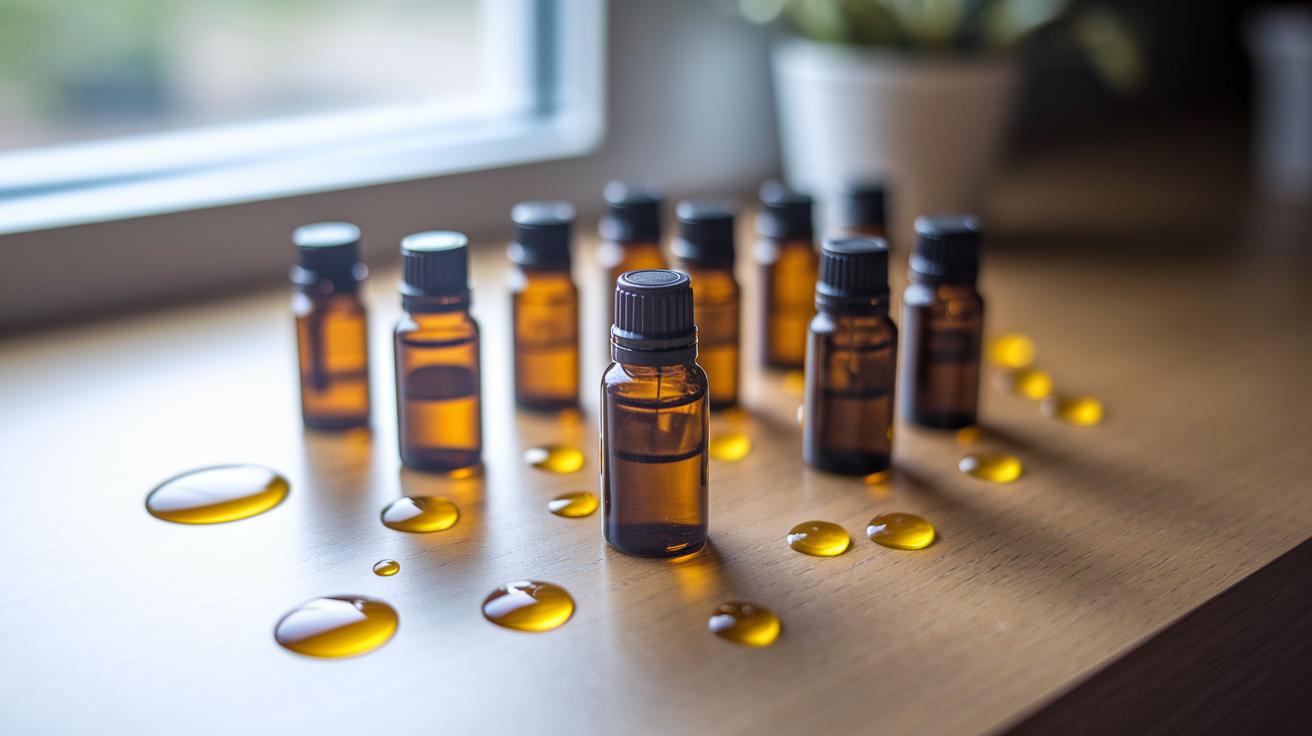
Nothing’s cozier than a soft mist of pure aroma drifting through your home. These easy oil blends drop right into a 10–15 ml diffuser (nebulizing means a fine mist delivers undiluted essential oils) like the Organic Aromas Mobile-Mini 2.0 or a pocket roll-on. You’ll find sleepy-time mixes to guide you into rest and stress-relief recipes that melt away tension. Have you ever noticed how a single breath of lavender can calm your mind?
All our oils are ethically sourced and certified organic for a pure, clean aroma. In just seconds you’ll count drops. Then only a few breaths and you’ll feel how the aroma ripples through your senses.
Think of each recipe as a tiny home ritual. A moment to pause, inhale, and let calm wash over you.
Here’s a quick list to get you mixing.
- Sleepy Time Blend: 10 drops Lavender, 5 drops Roman Chamomile (flower oil that calms), 5 drops Vetiver (grounding root oil)
- Immune Boosting Blend: 5 drops Eucalyptus, 5 drops Lemon (fresh citrus oil), 3 drops Cinnamon Bark (warming spice oil), 2 drops Clove (spicy antioxidant oil)
- Joyful Blend: 6 drops Orange (bright citrus), 4 drops Bergamot (uplifting floral), 4 drops Grapefruit (fresh, tangy citrus)
- Calm & Focus Blend: 6 drops Lavender (floral calm), 4 drops Peppermint (cooling mint), 2 drops Rosemary (herbaceous focus)
First add your drops and a little water to your diffuser. Then start your diffuser and let the mist work its magic for 15 minutes. Breathe. Relax.
Safety Guidelines for Home Aromatherapy
Here’s how to keep your aromatherapy rituals safe and soothing with Organic Aromas. Start with a patch test (a quick check for skin reactions). Simply dab one drop of your diluted oil blend on your inner forearm. Wait 24 hours. No redness or itch? You’re good to go.
Next, store your oils in a cool, dark spot. Keep them out of reach of curious hands and paws. Sunlight can alter the aroma and potency of your oils.
Handle hot oils like cinnamon bark or citrus with care. These oils can react in the sun and cause skin sensitivity (phototoxicity). Always dilute properly, think of dilution as your skin’s daily sunscreen.
If you’re pregnant, nursing, or have health concerns, check in with your healthcare provider before trying new blends. Better safe than sorry.
Here’s a quick list to guide you:
- Patch test every new blend on your inner forearm and wait 24 hours
- Store bottles in a cool, dark place, out of reach of kids and pets
- Dilute hot oils to avoid sun-triggered skin reactions
- Consult a professional if you’re pregnant, nursing, or under medical care
- Follow dilution guides to prevent irritation or oversensitivity
Follow these safety tips. Enjoy your soothing scents with confidence. Breathe. Relax.
Budget, Sourcing, and Maintenance for Home Aromatherapy
When you want home aromatherapy without breaking the bank, start with pure oils from Organic Aromas that come with a GC-MS report (a lab test that checks every compound in your oil). That safety check means you’re smelling real plant extracts, not fillers. Have you explored starter kits under $50? They often bundle four versatile oils with a Raindrop® ultrasonic diffuser or a Mobile-Mini 2.0 nebulizer (a compact device that turns oils into a fine mist). Then you can sample lavender for calm, citrus for brightness, or eucalyptus for a clear head.
Caring for your diffuser is part of the joy. A fresh mist starts with simple upkeep. Here’s a routine I love:
- Monthly soak. Mix equal parts white vinegar and water. Soak all Raindrop® or Mobile-Mini 2.0 parts for about 10 minutes, then rinse well. This removes stubborn oil residue and stops clogs.
- Bi-weekly wipe. Gently clean reed diffusers with a soft cloth to revive their slow, natural aroma drift.
- Quick unclog. If a nozzle feels blocked, ease out debris with a pin or cotton swab. Let every piece dry fully to avoid sticky buildup.
- Pad swap. After three to six months, change your Exquisite® diffuser pads for vibrant, day-one aroma.
And always check your kit’s safety guide. With these tips you’ll solve most diffuser hiccups before they stall your mist. Breathe. Relax.
Final Words
You’ve explored what aromatherapy is at home, from steam-distilled or cold-pressed oils that carry plant benefits straight into the air.
We guided you through picking your first oils, lavender, peppermint, citrus, comparing diffusers (ultrasonic, nebulizing, reed, heat) and choosing carrier oils.
Then you learned simple blends for sleep, focus or immune support, key safety steps like patch tests, and budget-friendly sourcing plus upkeep tips.
Now you’re ready to bring pure bliss into your space. Embrace each mist-filled breath as you discover how to start aromatherapy at home with ease.
FAQ
- What are essential oils for beginners?
-
Essential oils for beginners are gentle, versatile options like lavender, peppermint, citrus, tea tree, and chamomile, each offering clear benefits from relaxation to mood boosting.
- How do I use essential oils to scent a room?
-
You use essential oils to scent a room by adding three to five drops to a diffuser or simmer pot then letting the mist gently disperse natural fragrance throughout your space.
- What is an essential oils guide chart?
-
An essential oils guide chart is a visual list displaying each oil’s aroma notes, common uses, and dilution tips in an easy-to-scan PDF format for quick reference.
- What is the 30-50-20 rule for essential oils?
-
The 30-50-20 rule for essential oils is a blending guideline that suggests 30 percent top notes, 50 percent middle notes, and 20 percent base notes for a balanced aroma.
- Do I need FDA approval to sell essential oils?
-
You don’t need FDA approval to sell pure essential oils as fragrances or cosmetics, but you must follow labeling regulations and avoid making health claims that classify your products as drugs.
- What qualifications or licenses do I need for aromatherapy?
-
No formal license is required for basic aromatherapy practice in most areas. Completing a certified aromatherapy course builds expertise and credibility, but state regulations for professional practice can vary.
- What is an essential oil diffuser?
-
An essential oil diffuser is a device that disperses oils into the air as a fine mist, making it easy to enjoy aromatherapy benefits like relaxation, improved focus, and mood enhancement.
- How do I use aromatherapy oils?
-
Aromatherapy oils are used by inhaling them in a diffuser or steam, applying them topically when diluted with a carrier oil, and seeking professional advice before any internal use.


